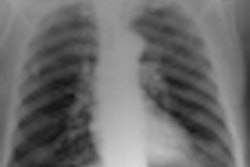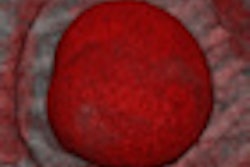Pediatric chest x-rays should be interpreted by radiologists, although attending pediatricians in an emergency department do a good job in their absence, according to research published in the October issue of Pediatric Emergency Care.
The study assessed the diagnostic accuracy of emergency chest radiograph interpretation by pediatric emergency physicians and pediatric radiologists of 1,196 examinations performed between October 2009 through January 2010 at the Edmond and Lily Safra Children's Hospital in Tel Hashomer, Israel. The radiographs required interpretation when radiologists were not on site and teleradiology access to them was not available (Pediatric Emergency Care, October 2012, Vol. 28:10, pp. 1052-1054).
After-hour exams were taken of 732 boys and 464 girls, all but 10 of whom were younger than 17 years of age, with the youngest being one day old. The x-ray exams of the other patients (aged 17 to 36 years) who had chronic illnesses that were still being followed by pediatricians were also included.
Dr. Michalle Soudack-Ben-Nun, director of pediatric radiology, and colleagues, determined that nearly one-third of the exams (28%) had discordant interpretations. Seventy-six (6.3% of the total) were clinically significant. These were categorized in one of two scenarios: when a pediatrician overlooked a finding compatible with bacterial infection or when a pediatrician overlooked other findings that might have had serious implications if they were not identified.
The most common discordant finding was diagnosis of an alveolar, or bacterial pattern, by a pediatrician when none existed. This happened in 100 cases, and 68 received unnecessary antibiotic treatment as a result.
On average, 15 misdiagnoses were made each month that could have had an impact on patient treatment. They were identified within 24 hours when pediatric radiologists formally interpreted the exams.
The delay in accurate diagnoses did not have any adverse clinical effects. The authors advised that daily rounds of inpatients, with both pediatricians and pediatric radiologists in attendance, were implemented and have been of mutual value.
"This mutual nurturing provides the pediatrician important chest film interpretation knowledge, and the radiologist with the clinical background and follow-up essential for intelligent reading," they wrote. Daily rounds provide continual training and education for everyone who participates in them, they concluded.



















